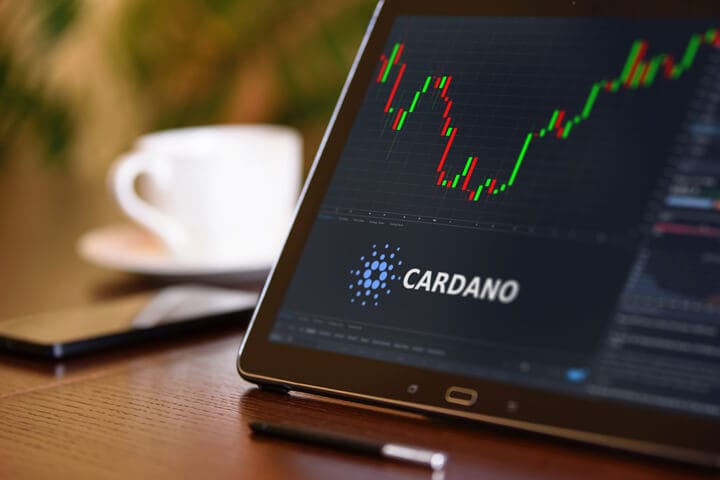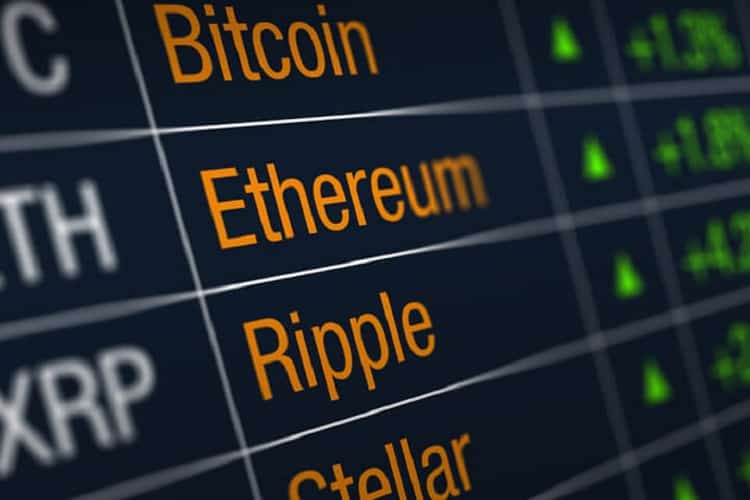Cryptocurrencies have become increasingly popular in recent years, and more and more people are investing in them every day. One of the most important metrics for investors to consider when investing in cryptocurrencies is the circulating supply – but what does this term mean? In this article, we explain what circulating supply means for cryptocurrencies, how it is calculated, why it is important, how to check the circulating supply of a cryptocurrency, and examples of cryptocurrencies with low and high circulating supply.
Author
-
Meet David, the maestro of social media enchantment at Galaxy Marketing. With a keen eye for trends and a flair for strategic storytelling, David turns pixels into engagement gold. In the digital cosmos, he's the navigator steering brands to stellar success. 🚀✨ #GalaxyMarketingExpert
Circulating supply refers to the number of coins or tokens that are available to the public in the market at any given time. It does not include coins or tokens held by founders or development teams, locked in wallets, or otherwise unable to be traded on exchanges or other markets. It is important to note that the circulating supply may differ from the total supply – which includes all coins or tokens ever created – depending on whether coins were burned (destroyed) or locked up by the team behind the project.
What is the circulating offer?
The circulating supply can be calculated by subtracting the number of coins not in the public domain from the total supply. This calculation can be done manually using data from Coinmarketcap and similar websites, which provide detailed information about the circulating coins and total supply of each cryptocurrency, as well as other metrics such as price and market capitalization (the total value of all coins in circulation).
It is important to understand that different cryptocurrencies have different amounts of circulating supply – some have very low amounts, while others have much higher amounts available to the public at any given time. For example, Bitcoin has an extremely low circulating stock (only 18 million BTC), while Ethereum has a much higher one (over 100 million ETH); Ripple has an even higher one (over 40 billion XRP), while Litecoin has a fairly low one (around 56 million LTC).
How is the circulating supply calculated?
The circulating supply of a cryptocurrency can have a significant impact on its price due to basic economic considerations: When demand is higher than available supply, prices naturally rise; conversely, when there is too much supply compared to demand, prices fall. This means that when studying cryptocurrencies, investors need to look at both total supply and circulating supply to get an accurate picture of their potential future value.
Why is circulating supply important?
Checking the circulating supply of a cryptocurrency is relatively easy: just visit coinmarketcap or another website that provides detailed information about each cryptocurrency’s supply and other metrics such as price and market capitalization (the total value of all coins in circulation). From here, you can easily query the current holdings of a particular coin, as well as the total holdings (which may vary depending on whether coins have been burned or otherwise withdrawn from circulation).
How to verify the circulation of a cryptocurrency?
Investors need to understand what “circulating supply” means when looking at cryptocurrencies, because it can play an important role in determining their future value – especially when compared to their respective total supply, which can differ depending on whether coins have been burned or otherwise withdrawn from circulation. By keeping these two numbers in mind when researching cryptocurrencies, you can get a better picture of their potential future performance and make informed decisions about your investments accordingly!
Examples of cryptocurrencies with low and high circulation
As mentioned earlier, different cryptocurrencies have different amounts of circulating supply – for some the supply is very low, for others it is much higher and available to the public at any time. Here are some examples: Bitcoin has an extremely low circulating stock (only 18 million BTC), while Ethereum has a much higher one (over 100 million ETH); Ripple has an even higher one (over 40 billion XRP), while Litecoin has a fairly low one (around 56 million LTC).
Closing thoughts
Investors need to understand what “circulating supply” means when looking at cryptocurrencies, because it can play an important role in determining their future value — especially when compared to their respective total supply, which can differ depending on whether coins have been burned or otherwise withdrawn from circulation. By keeping these two numbers in mind when researching cryptocurrencies, you can get a better picture of their potential future performance and make informed decisions about your investments accordingly!
conclusion
In conclusion, we discussed what “circulating supply” means in cryptocurrency, how it is calculated, why it is important to investors, how to check circulating supply for a particular cryptocurrency using websites like CoinMarketCap, and some examples of cryptocurrencies with low or high circulating supply. By keeping these two figures in mind when researching cryptocurrencies, you can get a better picture of their potential future performance and make informed decisions about your investments accordingly!
Call to Action
If you’re looking for help managing your social media accounts & marketing campaigns, don’t hesitate to reach out! Galaxy Marketing offers professional social media marketing services tailored specifically to your company’s needs and goals – contact us today and let’s build success together!
FAQ
Does the circulating supply affect the crypto price?
Circulating supply helps calculate the market capitalization of each coin. In addition, regulating scarcity reduces demand, which affects the value of the coin. It is important to understand these concepts because cryptocurrencies differ in how they circulate their supply.
What happens when the circulating supply reaches the maximum amount?
Generally, when the maximum supply is reached, fewer coins will be available in the market. This is expected to lead to a shortage in the market, which may eventually lead to deflation (or 0 percent inflation)
How much shiba is in circulation?
589.37T coins
SHIB has a circulating supply of 589.37T coins and a maximum supply of 999.99T SHIB.
Is crypto good with a low circulating supply?
The cryptocurrency with the lowest supply can be a good investment, but there are other factors to consider. Low supply drives up prices, but only if demand also increases. Low supply No demand cryptocurrency is a coin with a low supply.
Which coin has the highest circulating supply?
BTCBitcoin
All CryptocurrenciesRankNameCirculating Supply1BTCBitcoin19,298,200 BTC2ETHEthereum122,373,866 ETH *3USDTTether70,439,466,010 USDT *4BNBBNB157,896,916 BNB *43 more lines
What makes the value of cryptocurrencies rise?
A cryptocurrency gains value when demand exceeds its supply. When a cryptocurrency becomes profitable, more people will own it and demand will increase. Because people want to use it, they don’t want to sell it. This means that demand will be greater than supply and prices will rise.
Author
-
Meet David, the maestro of social media enchantment at Galaxy Marketing. With a keen eye for trends and a flair for strategic storytelling, David turns pixels into engagement gold. In the digital cosmos, he's the navigator steering brands to stellar success. 🚀✨ #GalaxyMarketingExpert
Unlock the Secrets of What is Osmosis Crypto!
February 22, 2023
Osmosity Crypto provides fast and secure transactions for digital assets with low fees and nan technology to reduce congestion. It also offers added security through its smart contract feature, making it a popular choice in the crypto world.
0 Comments8 Minutes
What is Leverage in Crypto? Uncover the Secrets of Trading with Leverage!
February 22, 2023
Maximize profits and minimize risks with cryptocurrency trading using leverage. Understand the different types of leverage available, the associated benefits and risks, and how to use it safely for successful trading.
0 Comments8 Minutes
Has Crypto Bottomed? Learn What Analysts Say Now!
StickyCrypto
February 22, 2023
Cryptocurrency is a digital asset used as a medium of exchange. Factors influencing its price include supply & demand, news events, speculation, technical & fundamental analysis. Is crypto at its bottom? Analyze charts & underlying economic factors to make informed decisions on whether now is a good time to invest.
0 Comments9 Minutes
Is Crypto the Future? Unlock the Possibilities of Tomorrow Today!
StickyCrypto
February 22, 2023
Cryptocurrency is a digital currency that offers high security, low fees and fast transactions. NAN is a type of cryptocurrency with advantages such as no fees, instant transaction speed and smart contracts support. Discover why crypto may be the future of finance!
0 Comments8 Minutes
What is Bayc NFT? Unlock the Possibilities of Non-Fungible Tokens!
StickyNFT
February 22, 2023
Experience secure & efficient trading of digital assets with Bayc NFT! Enjoy access to liquid markets, a wide range of digital assets, low fees & more. Get in touch with us for social media marketing services today!
0 Comments10 Minutes















